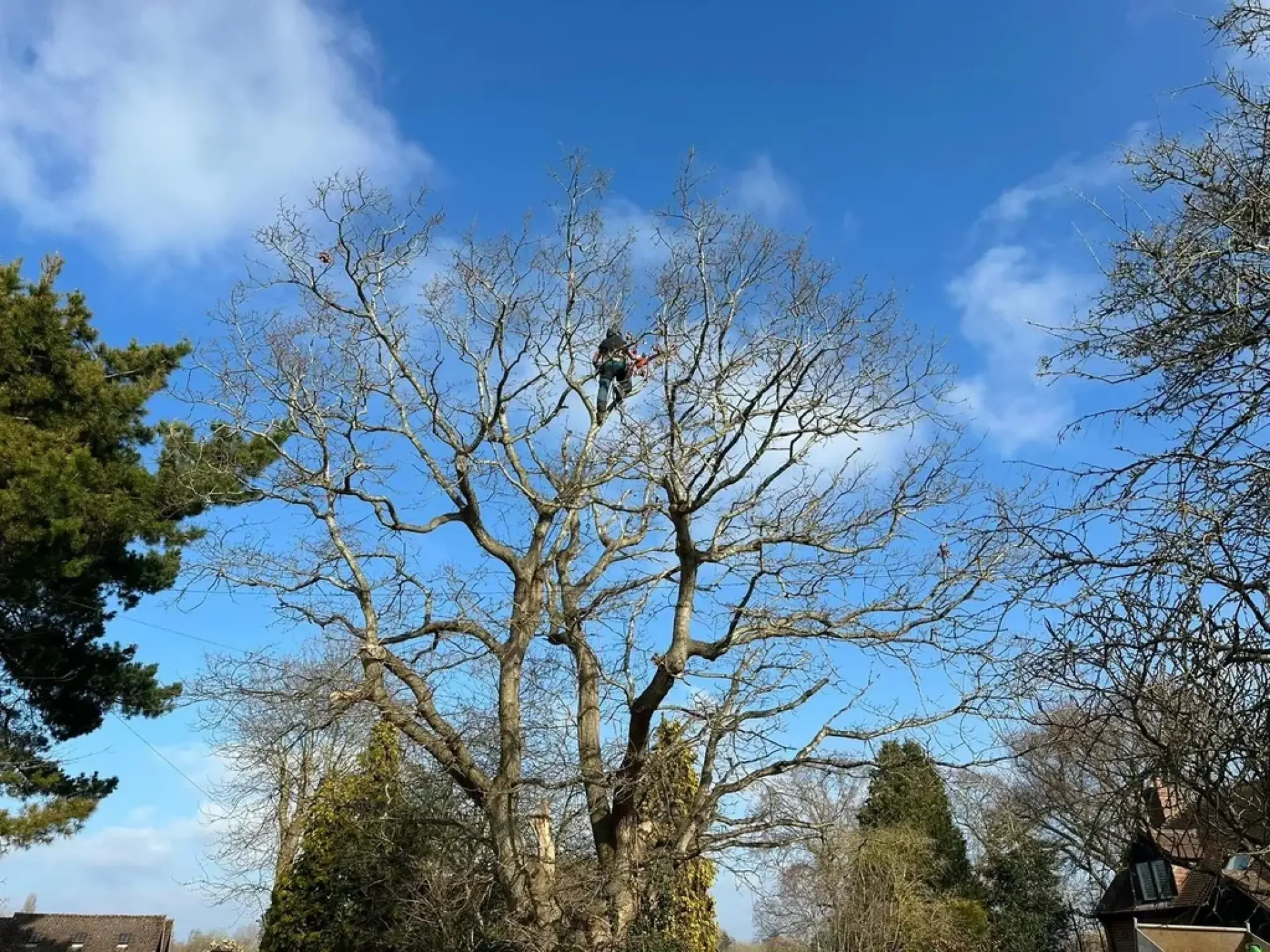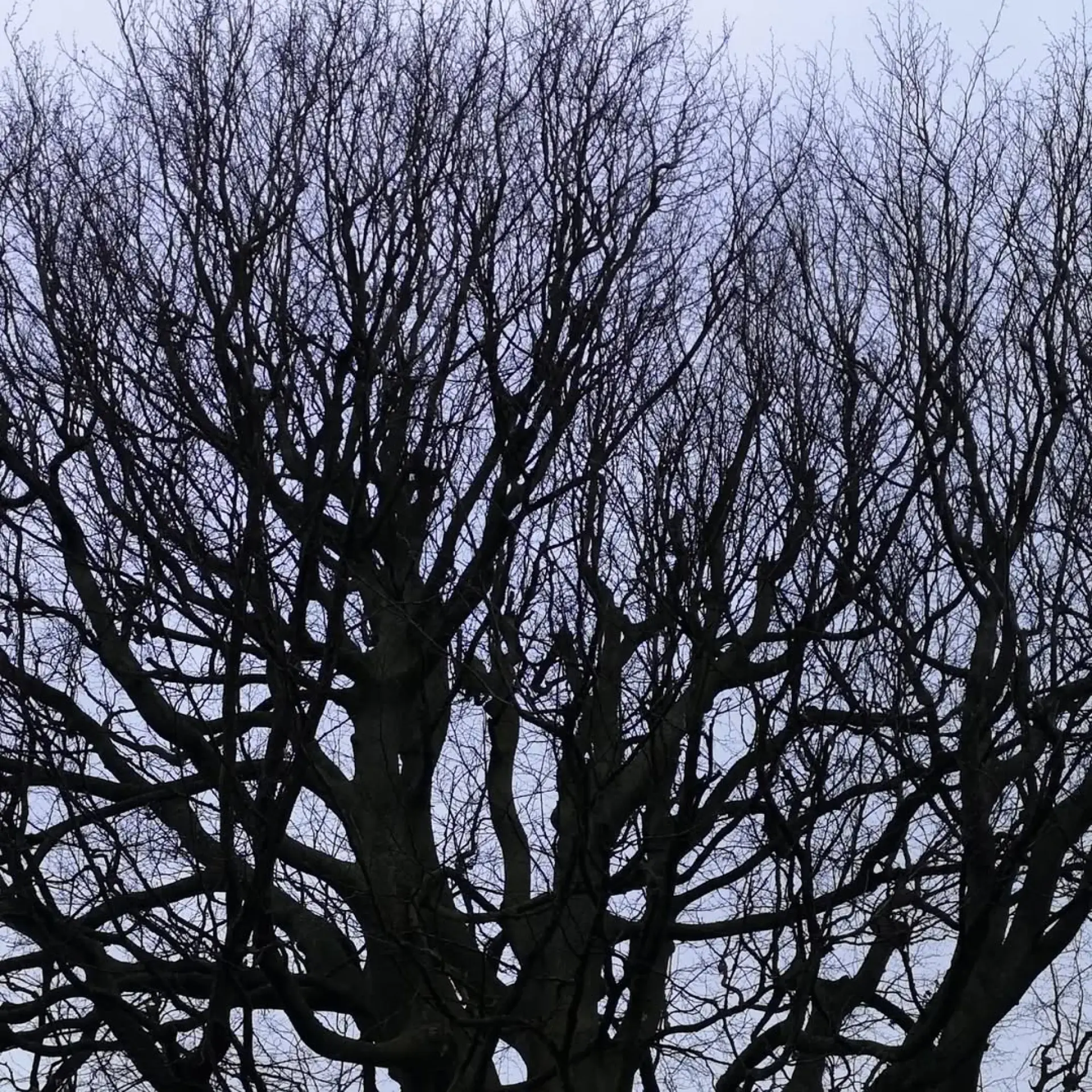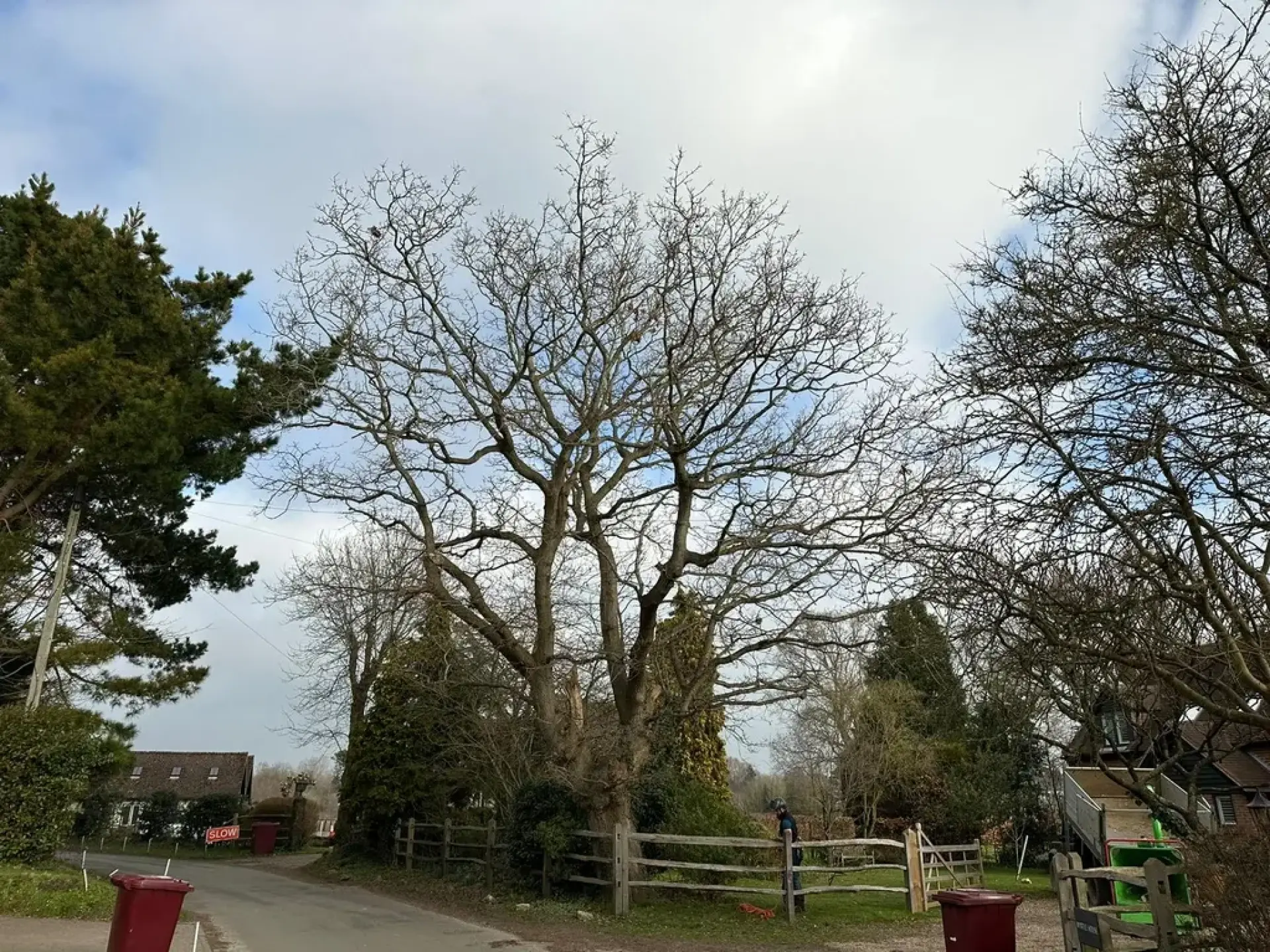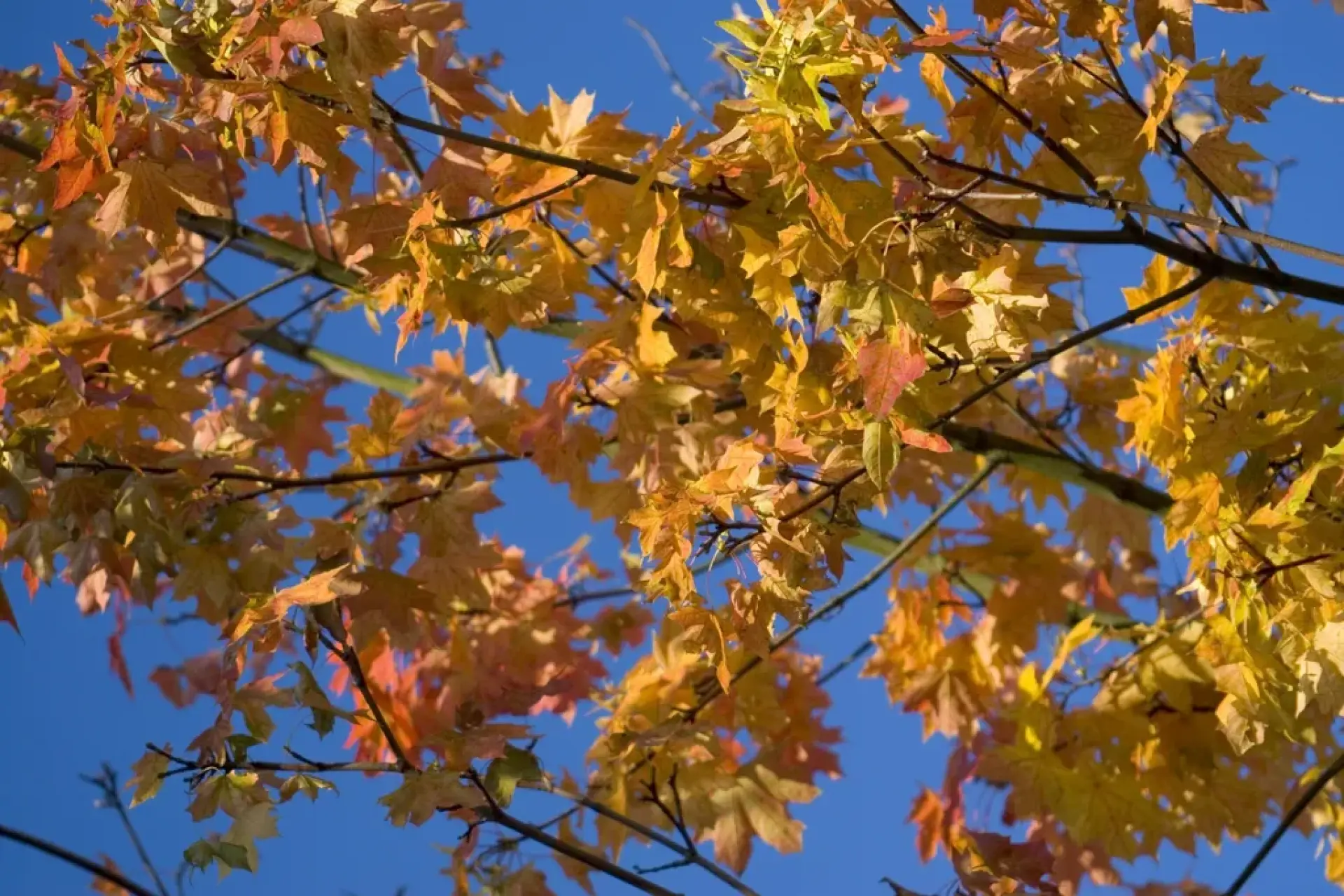Concerned about your tree’s safety? Learn how to spot signs your tree may be dangerous, from root damage to trunk cracks, and when to call in professionals.
Cracks or Splits in the Trunk
The trunk is the main part of the tree, and it supports the tree's weight and distributes nutrients. So, when cracks or splits appear, it indicates that the tree’s structural integrity has been weakened.
Splits and cracks often occur due to internal decay, rapid changes in temperature, storm damage or poor pruning practices. Vertical splits can weaken a tree to the point that wind, snow or heavy foliage can cause it to fall. On the other hand, horizontal cracks are often a sign that there's severe internal damage to the tree trunk.
One of the most concerning types of cracks is the co-dominant stem split, which is where two or more main stems grow close together and compete for dominance. These stems are attached by weak tissue and are prone to splitting under pressure. A visible crack at the junction of these stems is a strong warning sign that this problem is present in your tree.
While not every crack is a sign your tree poses a danger, keeping an eye on any structural damage is essential. However, ignoring these warning signs could result in significant property damage or serious injuries if the tree collapses unexpectedly.
Damaged or Exposed Roots
The health and stability of a tree are rooted in its underground support system. The roots anchor the tree to the ground and are responsible for absorbing water and nutrients. When these roots are damaged or become exposed, it can be a warning sign that the tree may be dangerous and at risk of collapsing.
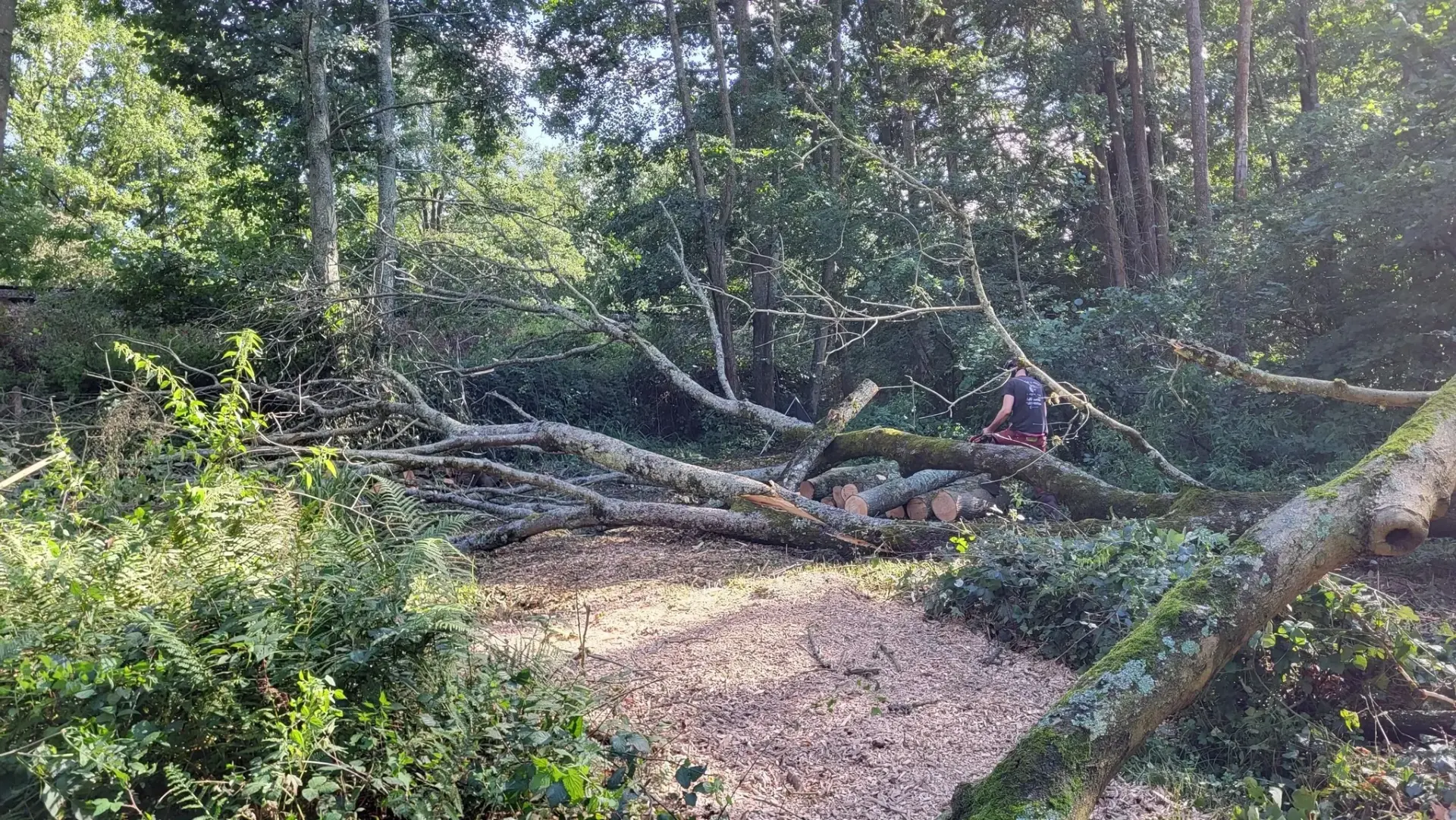
Exposed roots are often signs of issues such as soil erosion or poor growing conditions. Without the protective layer of soil, these roots are left vulnerable to physical damage from equipment like lawnmowers and extreme weather.
As a result, they provide less effective support to the tree and are more prone to drying out, decaying, or becoming infested with pests and fungi. Over time, this deterioration can increase the risk of the tree falling.
One of the biggest signs of exposed roots is the appearance of mushrooms or fungal growth around the base of the tree. Trees suffering from advanced root decay can also show signs of canopy thinning, leaning or leaf discolouration.
Fungal Growth at the Base
While mushrooms and other fungi may seem harmless or even natural in a woodland landscape, if you spot them near the trunk of your tree in your garden, it's often a sign that there's internal decay in your tree.
Fungi thrive in moist, decomposing organic material, and when they appear at the base of a tree, it often means that the wood underneath the bark is rotting. This decay typically starts in the roots or the lower trunk, and over time, the decay can hollow out these sections and weaken the tree from the inside.
One of the most concerning types of fungi is bracket or shelf fungi, which grow in layers on the trunk or root flare. These fungi are a sign that there's advanced internal decay, and trees with this type of fungal growth may not show symptoms like leaf discolouration or wilting until the damage is severe, making it difficult for homeowners to spot the danger early on. Identifying and addressing these fungal issues early on can help you prevent the tree from becoming unstable or collapsing unexpectedly.
Hollow or Soft Areas in the Trunk
Hollow or soft areas in a tree trunk are a big sign that the tree's internal structure has become compromised. While a tree can grow for many years with internal decay, the loss of solid wood inside the trunk weakens its ability to support itself, increasing the risk of it toppling over unexpectedly.
Hollow sections in a tree are often the result of internal decay caused by pests, fungi or physical damage. This decay typically begins in a wound or damaged area where pathogens can enter and gradually decompose the heartwood. Over time, the internal structure of the trunk can rot away, leaving a hollow cavity in its place. Although the tree may still produce leaves and appear healthy on the outside, its core strength is significantly reduced, making it more susceptible to breaking or collapsing.
Soft spots in the trunk are another sign of decay. When these areas are pressed, they may feel spongy, which indicates that the wood fibres have begun to break down. This type of internal deterioration often goes unnoticed until it's reached a severe stage, making regular inspections essential. Trees with soft or hollow trunks are at a higher risk of falling during storms, high winds, or periods of heavy rain when the ground becomes saturated and the tree's stability is compromised.
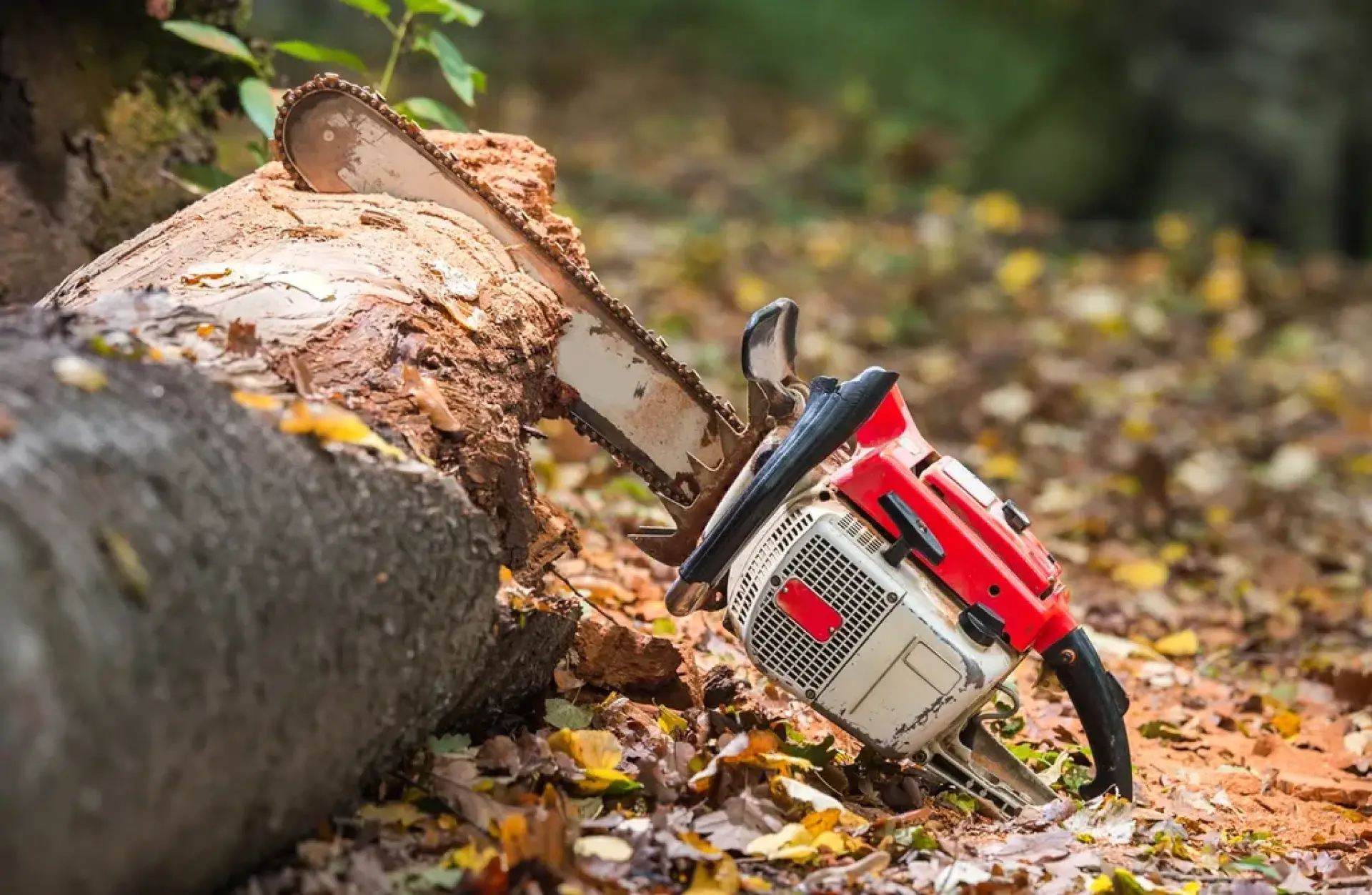
Trees with significant hollowing should be evaluated by a professional arborist since they can use a mallet test, seismograph, or sonic tomography to determine the extent of the decay and the tree’s safety.
While not all hollow trees are hazardous, the extent and location of the hollow areas play a crucial role in determining the risk of your tree collapsing. In some cases, the tree can be preserved with support systems such as cabling or bracing, but in most cases, removing the tree entirely is the safest option.
Redrock Tree Care provides expert tree removal services for residential and commercial properties across Alton, Hindhead, Farnham and Hampshire. Our certified team can handle hazardous, dead, or damaged trees safely using advanced equipment and techniques.

